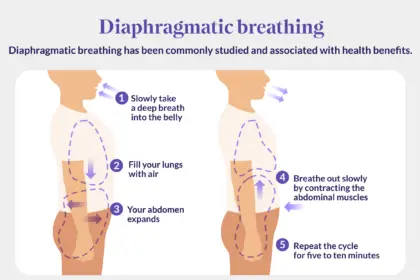Breast cancer is one of the most common cancers among women worldwide, yet there are striking differences in breast cancer rates between countries. Japan in particular has significantly lower rates of breast cancer compared to the United States.
In fact, Japan’s breast cancer rate is a startling 66% lower than that of the U.S. What accounts for this major disparity? Research increasingly points to diet as a key factor, specifically the consumption of isoflavones.
Isoflavones are plant compounds found in soy foods that act as phytoestrogens and may offer protective benefits against breast cancer. The traditional Japanese diet is much higher in isoflavone-rich soy foods compared to the typical Western diet. This dietary difference may be central to understanding why Japanese women have a much lower incidence of breast cancer.
In this article, we will explore the science behind isoflavones, their presence in the Japanese diet, and the potential breast cancer protective effects these compounds may confer. Unpacking the nutritional distinctions between these two countries’ diets can provide important insights into reducing breast cancer risk through informed dietary choices.
When we talk about minimizing our risk of breast cancer, it is crucial to consume sufficient amounts of iodine. Though it is mostly linked with the thyroid gland, in women, the amount of iodine in the breasts is actually higher than that in the thyroid, which makes it pivotal for healthy breasts.
The Role of Iodine in the Body
Iodine is how nature keeps babies safe as it is crucial for their brain development. The iodine storages in the breasts ensure that babies get the needed amount of iodine through breastfeeding. But, iodine is not just good for babies, but for mothers too. Namely, women with lack of iodine have a greater likelihood of developing breast cancer, as explained on Healthy Holistic Living.
Low Iodine Levels & Breast Cancer
When the body has a low amount of iodine, the ovaries will start to make more estrogen. The higher levels of estrogen flowing through the body will elevate the chance of reproductive cancers and breast cancer. Moreover, the lack of iodine will boost the estrogen sensitivity in the breasts and will make them more prone to breast cancer.
According to Dr. Bernard Eskin, a pioneer in iodine research, breast tissue low on iodine has higher chances of pre-cancerous changes, which could be reversed by iodine. Namely, iodine caused the cancerous cells to die and averts further tumor growth without damaging the healthy cells.
Women in Japan vs. Women in the USA
According to statistics, in Japan, the rates of breast cancer are 66 percent lower than the ones in the U.S. and it is due to the difference in iodine levels. According to the U.S. Dietary Reference Intake, the needed dosage for iodine is 150 mcg per day and 290 for pregnant and nursing women whereas in Japan, women consume approximately 25 times more than this amount.
This difference is in a large part a result of the Western diet which is lacking iodine. From the 20s onwards, Americans have acquired iodine from salt but nowadays, women have been reducing their intake of salt, which has resulted in lower amounts of iodine.
Other major contributing factor to iodine deficiency is exposure to environmental toxins. Namely, chemicals known as halides attach to cell receptors that are meant for iodine and shut them off from the cells and prevent the body from absorbing and using it.
Natural Sources of Iodine To Lower Risk Of Breast Cancer
Since the body cannot naturally produce iodine, here are some excellent, natural sources to add to your daily diet:
- Seafood, including lobster, tuna, salmon, shrimp.
Click Here To Check Out Organic Kelp Powder, A Great Natural Source Of Iodine.
Great In Smoothies. - Cranberries
- Potatoes with the peel
- Eggs
- Navy beans
The significantly lower rates of breast cancer in Japan compared to the United States highlight the powerful role diet can play in cancer prevention. While many factors influence cancer risk, the research on isoflavones indicates that these soy-derived compounds may be protective against breast cancer.
The traditional Japanese diet is rich in isoflavone-containing soy foods like tofu, edamame, and miso, which may explain why Japanese women have 66% lower breast cancer rates. The higher isoflavone intake in Japan provides a key nutrient that appears to be lacking in the typical American diet.
Although genetics and other factors are at play, consciously increasing isoflavone consumption from soy foods could be a meaningful dietary change for reducing breast cancer risk. The Japanese diet provides a real-world example of how nutrition can impact cancer rates.
By looking to dietary habits in Japan that promote lower cancer risk, American women may find motivating clues to help bring down high breast cancer rates in the U.S. through informed dietary approaches.





